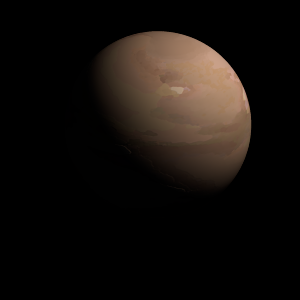|
|
Space Astro
|
Info for exoplanet "Sutrenaiad Ar"
| Scientific (actual) data |
|---|
| Name | Kepler-225 c |
| Planet status | Confirmed |
| Radius | 0.164 |
| Orbital period | 18.7942 |
| Semi major axis | 0.111 |
| Discovered | 2014 |
| Updated | 2021-02-05 |
| Tconj | 2455010 |
| Impact parameter | 0.32 |
| Publication | Announced on a website |
| Detection type | Primary Transit |
| Alternate names | 2MASS J19284655+4727255 c, K00736.01, KIC 10340423 c, KOI-736 c, KOI-736.01, WISE J192846.55+472725.5 c |
| Star name | Kepler-225 |
| Right ascension | 292.19° |
| Declination | 47.46° |
| Mag j | 14.032 |
| Mag h | 13.341 |
| Mag k | 13.253 |
| Star distance | 569.99 |
| Star metallicity | -0.185 |
| Star radius | 0.48 |
| Star sp type | M1 V |
| Star temperature | 3682 |
| Star alternate names | 2MASS J19284655+4727255, KIC 10340423, KOI-736, WISE J192846.55+472725.5 |
| Wikipedia article | Kepler-225 c |
Back
| |
| Fictional info (?) |
|---|
| Suggested name | Sutrenaiad Ar |
| Planet type | Planet |
| Because of its fast rotation, the planet's shape is that of an oblate spheroid (it has a slight but noticeable bulge around the equator). A prominent result is the "great gray spot", a giant storm that is known to have existed for centuries since it was first seen by telescope. |
| Atmosphere | 2H2O | 76% |
| Ammonia | 17% |
| Oxygen | 5.8% |
| Xenon | 0.17% |
| Atmospheric pressure | 90 bar |
 |
| No known satellites |
| Google search for Sutrenaiad ar |
|
Website by Joachim Michaelis
|
|
|
|